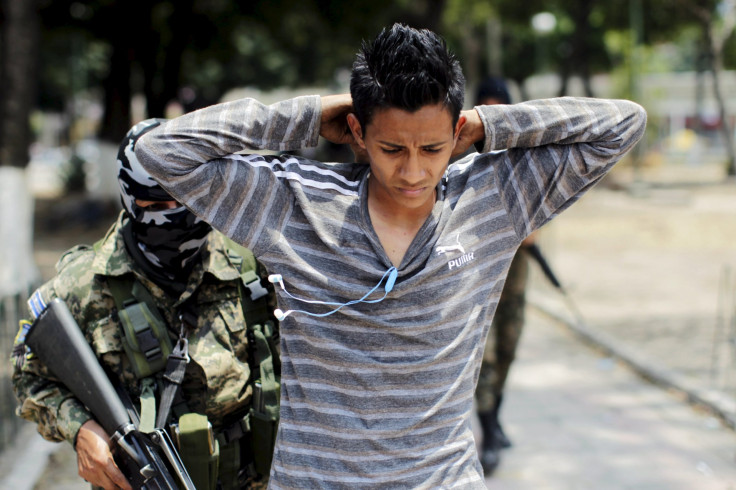El Salvador Violence Soars As Government Prepares Battalions Against Gangs

El Salvador’s year is already looking to be a particularly violent one. After emerging from one of its deadliest months in a decade and a fatal shootout this weekend, the government announced it would set up a police battalion to “clean up” the gang problem. The increasingly militarized approach and escalating violence continue to fuel an exodus of children and families out of the country, even though many of them may not make it as far as the U.S. border this year.
Nine members of the Barrio 18 gang, one of the main criminal groups in El Salvador, were killed Saturday after a shootout with federal security forces. After the incident, President Salvador Sánchez Cerén announced the creation of three army battalions to combat gang activity. On Monday, he followed up that plan with an additional police battalion that would coordinate actions with the army.
Government officials declined to elaborate on how the forces would operate. “I’m not going to explain how they work because ... I would be revealing information that I cannot reveal,” said Hato Hasbún, president of El Salvador’s security commission, at a press conference Monday. “They are immediate battalions, specialized,” he said. Meanwhile, five members of the military have been killed or injured in gang attacks since Friday that resulted in three deaths and two injuries.
“There is a scheme being designed for war between gangs and law enforcement security units. And this is getting very dangerous,” said Jeannette Aguilar, director of the University Public Opinion Institute at the Jose Simeón Cañas Central American University, in an interview with Spain’s El País.
In 2012, El Salvador’s two main gangs, Barrio 18 and Mara Salvatrucha, also known as MS-13, agreed to a historic but controversial truce that temporarily caused the homicide rate to drop sharply. That truce broke down last year, and violence has continued to surge, averaging 15 killings a day in early 2015.
In March, 481 people were reported murdered in El Salvador, its deadliest month in 10 years. El Salvador and its neighbors Honduras and Guatemala have some of the highest homicide rates in the world. The three countries – known as the Northern Triangle – also have the world’s highest rates of child homicides. In El Salvador last year, at least 111 people under age 18 were killed, 101 of them by violent means, according to UNICEF. Most of those killed were 14 to 17 years old.
El Salvador is one of the primary source countries of unaccompanied child migrants and families streaming north into Mexico and the United States. Last summer the number of migrants at the southern U.S. border hit crisis levels, overwhelming Border Patrol resources and migrant shelters. This year the numbers are projected to be lower, in part because Mexico has dramatically increased its own enforcement operations, deporting and detaining Central American migrants at twice the rate as it did last year.
Last week four buses full of Central American migrants, led by a priest, Alejandro Solalinde, made their way to Mexico City to demand better treatment for migrants and asylum seekers, who reportedly have faced higher risks of extortion, kidnapping and assault while they have turned to more dangerous routes in the wake of Mexico’s crackdown.
© Copyright IBTimes 2024. All rights reserved.






















